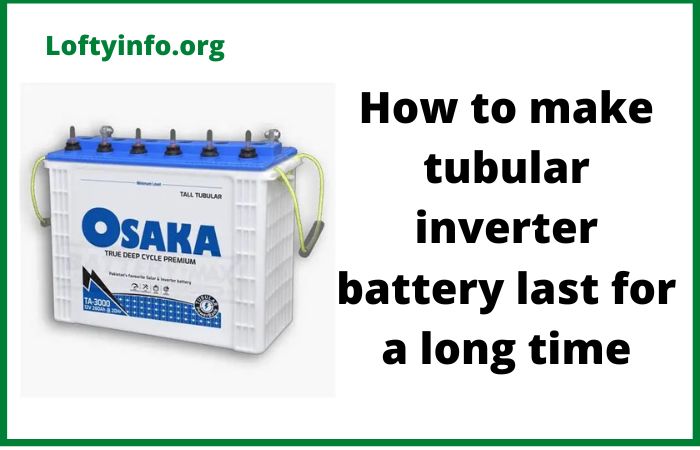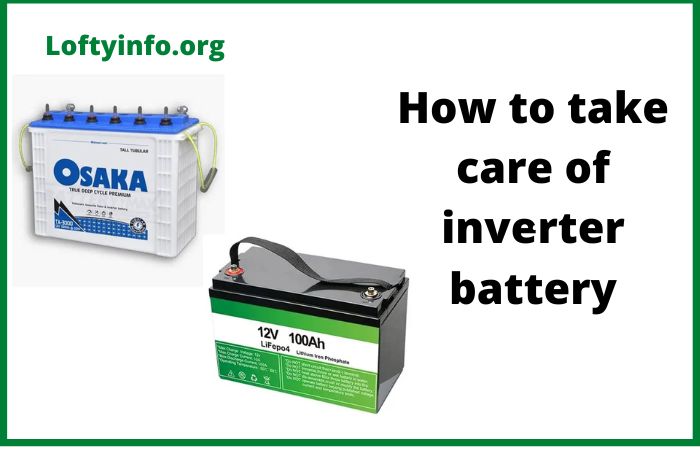Factors to consider when choosing battery for your solar setup
When investing in a solar energy system, choosing the right battery can make the difference between a reliable, cost-effective setup and one that constantly disappoints.
While solar panels get most of the attention, your battery bank is the heart of energy storage, determining how much power you’ll have when the sun isn’t shining.
Whether you’re planning an off-grid homestead, a backup power system or looking to maximize your solar investment, understanding the factors to consider when choosing battery for your solar setup is essential for long-term success and satisfaction.
Factors to consider when choosing battery for your solar setup
1) Battery Chemistry and Technology Type
The first critical decision involves selecting the right battery chemistry for your specific needs.
Lithium-ion batteries, particularly Lithium Iron Phosphate (LiFePO4), have become increasingly popular due to their exceptional depth of discharge capabilities, allowing you to use up to 80-90% of their capacity without damage.
These batteries offer superior cycle life, often lasting 3,000 to 5,000 cycles or more, translating to 10-15 years of reliable service.
Lead-acid batteries, including flooded and sealed varieties, remain a viable option for budget-conscious installations.
Flooded lead-acid batteries are the most economical choice but require regular maintenance, including checking water levels and ensuring proper ventilation.
Sealed lead-acid batteries such as AGM (Absorbed Glass Mat) and gel types, eliminate maintenance concerns but typically cost more than their flooded counterparts while offering less capacity.
For those seeking cutting-edge technology, saltwater batteries present an environmentally friendly alternative using non-toxic materials, though they’re currently less common and may have lower energy density compared to lithium options.
Each chemistry brings distinct advantages: lithium excels in efficiency and lifespan, lead-acid offers affordability and emerging technologies promise sustainability.
2) Capacity Requirements and Energy Storage Needs
Calculating your capacity requirements accurately prevents both overspending on unnecessary storage and the frustration of insufficient power reserves.
Start by analyzing your daily energy consumption in kilowatt-hours (kWh).
Review your electricity bills, use energy monitoring devices, or manually calculate the wattage of appliances multiplied by their daily usage hours.
Once you’ve established your baseline consumption, factor in your autonomy days, the number of days you want your battery bank to sustain your home without solar input.
For grid-tied systems with backup functionality, one to two days might suffice.
Off-grid installations typically require three to five days of autonomy to weather extended cloudy periods.
Your total capacity need equals your daily consumption multiplied by desired autonomy days, divided by the battery’s usable depth of discharge.
Remember that battery capacity diminishes over time, so building in a 20-25% buffer ensures your system maintains adequate performance throughout its lifespan.
Consider future expansion plans, will you add more appliances, an electric vehicle or additional living space.
Accounting for growth now can save expensive upgrades later.
3) Depth of Discharge and Cycle Life
Understanding depth of discharge (DoD) is crucial when evaluating the factors to consider when choosing battery for your solar setup.
DoD refers to the percentage of battery capacity that can be safely used without compromising longevity.
Lithium batteries typically allow 80-90% DoD, meaning a 10 kWh battery provides 8-9 kWh of usable energy.
Lead-acid batteries, should only be discharged to 50% DoD to prevent premature failure, effectively cutting their usable capacity in half.
Cycle life represents how many charge-discharge cycles a battery can endure before its capacity degrades to 80% of original specification.
This metric directly impacts your long-term investment value.
A lithium battery rated for 5,000 cycles at 80% DoD delivering 10 kWh daily will provide approximately 13-14 years of service.
A lead-acid battery rated for 1,500 cycles at 50% DoD might only last 4 to 5 years under similar conditions.
The relationship between DoD and cycle life is exponential, shallow discharges significantly extend battery life.
If you consistently use only 50% of a lithium battery’s capacity instead of the maximum 90%, you could potentially double its cycle life.
This consideration becomes particularly important for systems with variable energy demands or those experiencing seasonal usage patterns.
4) Voltage Compatibility and System Integration
Your battery voltage must align with your inverter and charge controller specifications to ensure safe, efficient operation.
Common system voltages include 12V, 24V, and 48V, with higher voltages generally more efficient for larger installations due to reduced current draw and smaller wire requirements.
A 48V system can deliver the same power as a 12V system while drawing one-quarter the current, allowing smaller, less expensive wiring and reduced energy losses.
Smaller installations under 1,000 watts often perform adequately with 12V or 24V configurations.
Mismatched voltages create serious safety hazards and equipment damage, so verify compatibility across all components before purchasing.
Consider whether your system requires series or parallel connections to achieve desired voltage and capacity.
Series connections increase voltage while maintaining capacity, whereas parallel connections increase capacity while maintaining voltage.
Some battery management systems limit the number of units that can be connected, potentially restricting future expansion.
Modular systems offering flexible configuration options provide greater adaptability as your needs evolve.
5) Operating Temperature Range and Environmental Conditions
Battery performance varies dramatically across temperature ranges, making environmental factors essential considerations.
Lithium batteries generally operate efficiently between -4°F to 140°F (-20°C to 60°C), though charging in freezing temperatures can cause permanent damage without proper battery management systems.
Most quality lithium batteries include internal heating elements that activate before charging in cold conditions.
Lead-acid batteries suffer capacity losses in cold weather with performance dropping 20-30% at freezing temperatures.
Excessive heat accelerates degradation, potentially halving lifespan in consistently hot environments.
Ideal storage temperatures for most batteries fall between 50°F and 77°F (10°C to 25°C).
Your installation location matters tremendously.
Batteries housed in climate-controlled spaces maintain optimal performance and longevity.
Outdoor installations, garages or sheds experience temperature extremes requiring batteries specifically rated for such conditions.
Some manufacturers offer temperature compensation features within charge controllers that adjust charging parameters based on ambient conditions, protecting your investment from temperature-related damage.
6) Safety Features and Battery Management Systems
Modern battery management systems (BMS) provide crucial protection against overcharging, over-discharging, short circuits and thermal runaway.
Quality lithium batteries include sophisticated BMS technology monitoring individual cell voltages, balancing charges across cells and disconnecting the battery if dangerous conditions develop.
Look for batteries with certifications from recognized testing organizations such as UL (Underwriters Laboratories), CE (Conformité Européenne), or UN38.3 for transportation safety.
These certifications indicate the battery has undergone rigorous testing for safety and reliability.
Cell balancing capabilities ensure all cells within your battery bank maintain equal charge levels, preventing premature failure of weaker cells and maximizing overall system lifespan.
Additional safety considerations include built-in thermal management, automatic shut-off mechanisms and clear visual indicators for system status.
Some advanced systems offer smartphone connectivity, allowing real-time monitoring of battery health, charge levels and performance metrics.
This visibility enables proactive maintenance and early problem detection.
8) Cost Analysis and Return on Investment
When weighing the factors to consider when choosing battery for your solar setup, upfront cost versus long-term value requires careful analysis.
Lithium batteries command premium prices, typically ranging from $500-$1,000 per kWh of usable capacity.
Lead-acid batteries cost substantially less initially, around $200-$400 per kWh but their limited cycle life and lower DoD affect total cost of ownership.
Calculate the cost per cycle by dividing total battery cost by expected cycle life.
A $7,000 lithium battery lasting 5,000 cycles costs $1.40 per cycle while a $3,000 lead-acid battery lasting 1,500 cycles costs $2.00 per cycle.
Over a 15-year period, you might purchase one lithium battery bank versus three or four lead-acid replacements, making lithium economically superior despite higher initial investment.
Factor in additional costs including installation, maintenance, and replacement expenses. Lead-acid batteries require periodic water additions, equalization charges and eventual disposal fees.
Lithium batteries offer virtually maintenance-free operation, offsetting their premium pricing through reduced labor and hassle.
Many regions offer incentives, rebates or tax credits for solar battery storage, potentially reducing effective costs by 20-30%.
9) Warranty Coverage and Manufacturer Reputation
Comprehensive warranty coverage protects your investment and provides insight into manufacturer confidence in their product.
Quality lithium batteries typically offer 10-year warranties guaranteeing 80% capacity retention.
Lead-acid warranties generally range from 1-5 years. Scrutinize warranty terms carefully, some cover only manufacturing defects while others include performance guarantees.
Research manufacturer reputation through customer reviews, industry forums, and professional installer recommendations.
Established companies with decades of experience generally provide better support and honor warranties more reliably than newcomers.
Consider whether the manufacturer offers local service centers, responsive customer support and readily available replacement parts.
Documentation quality matters significantly.
Comprehensive installation manuals, troubleshooting guides, and technical specifications indicate professional manufacturing standards.
Manufacturers providing detailed performance data, testing results and transparent specifications demonstrate commitment to quality and customer satisfaction.
Final Considerations
Selecting the optimal battery involves balancing technical requirements, budget constraints and long-term goals.
Prioritize reliability and safety over cost savings, a failed battery can damage your entire solar investment.
Consult with certified solar installers who can assess your specific situation, perform load calculations, and recommend appropriately sized components.
Remember that battery technology continues advancing rapidly.
Today’s premium lithium batteries deliver twice the performance at half the cost compared to options available just five years ago.
While this progress is exciting, avoid paralysis by analysis, current technology is mature, reliable and cost-effective for most applications.
The best time to invest in solar storage is when you’re ready to enjoy energy independence, backup security and reduced electricity costs.
Choose wisely, install properly and your battery bank will provide decades of dependable service.
best off grid solar setup between 12v, 24 and 48v
Considerations Before Adding a Wind Turbine to your Solar Setup
Best battery for off grid solar system
How to get the best from your solar setup
Top considerations when choosing the right battery size for your solar setup
Top considerations before adding more solar panels to your solar setup






